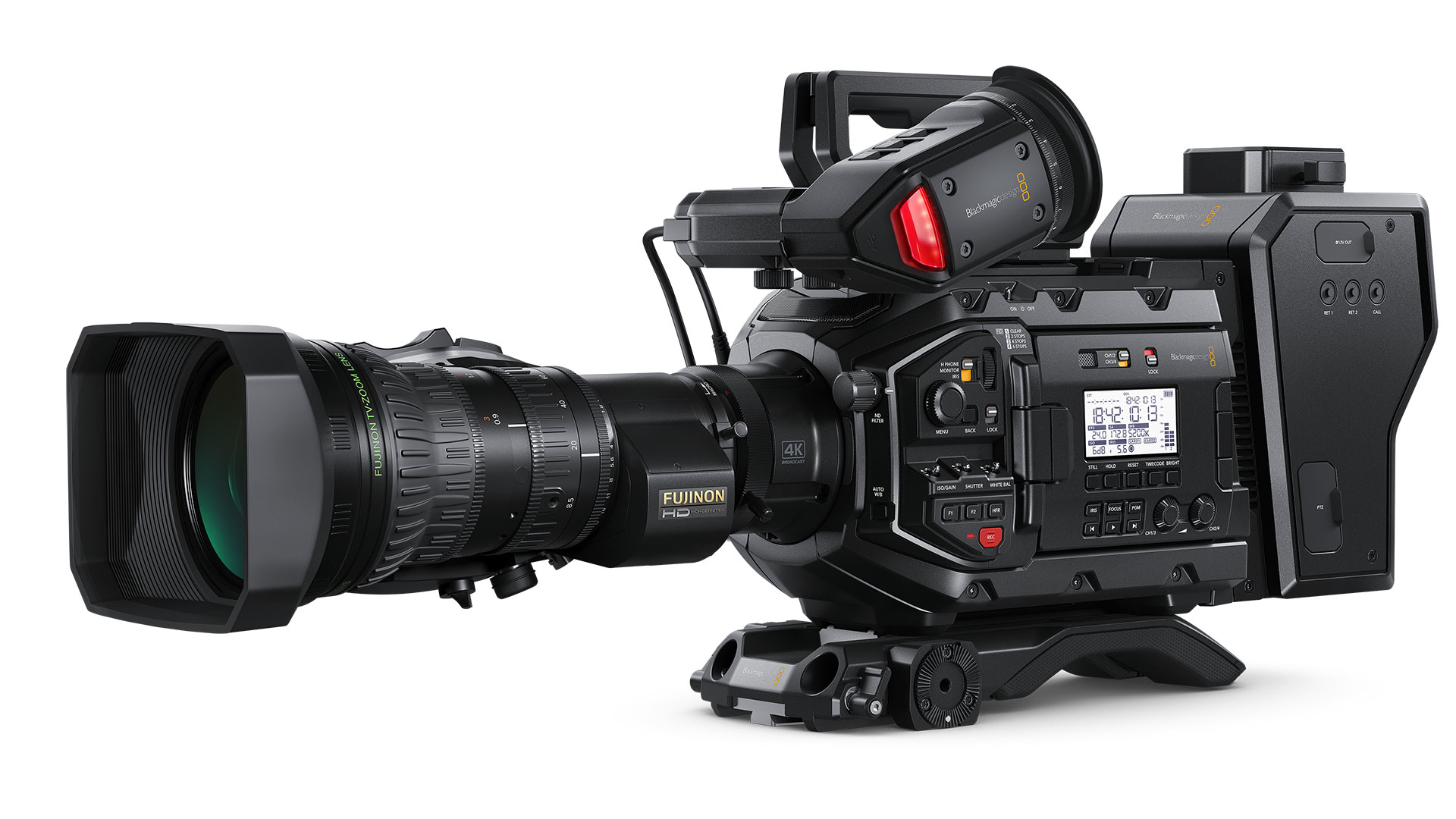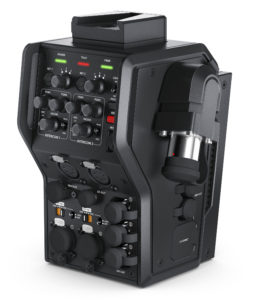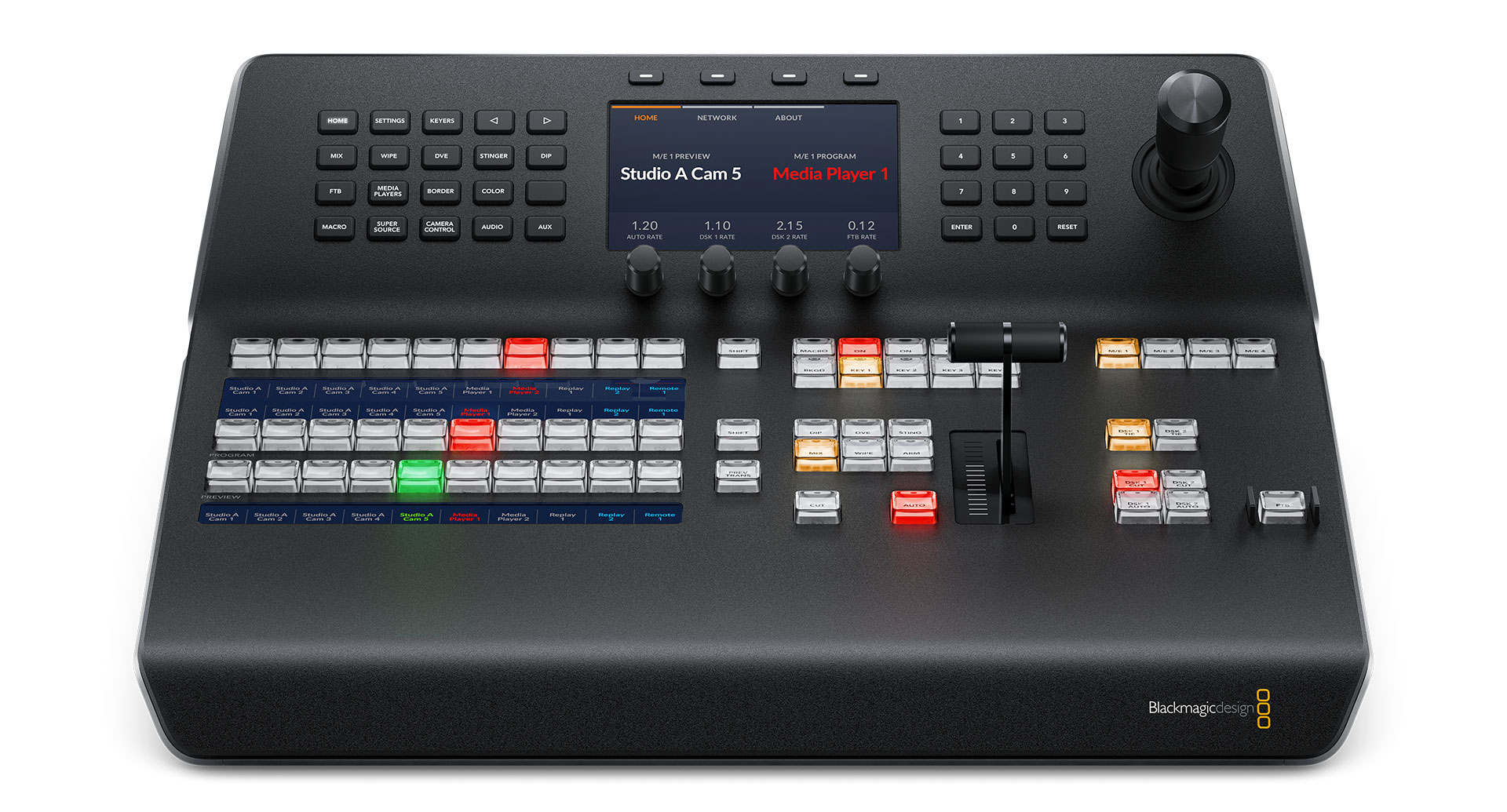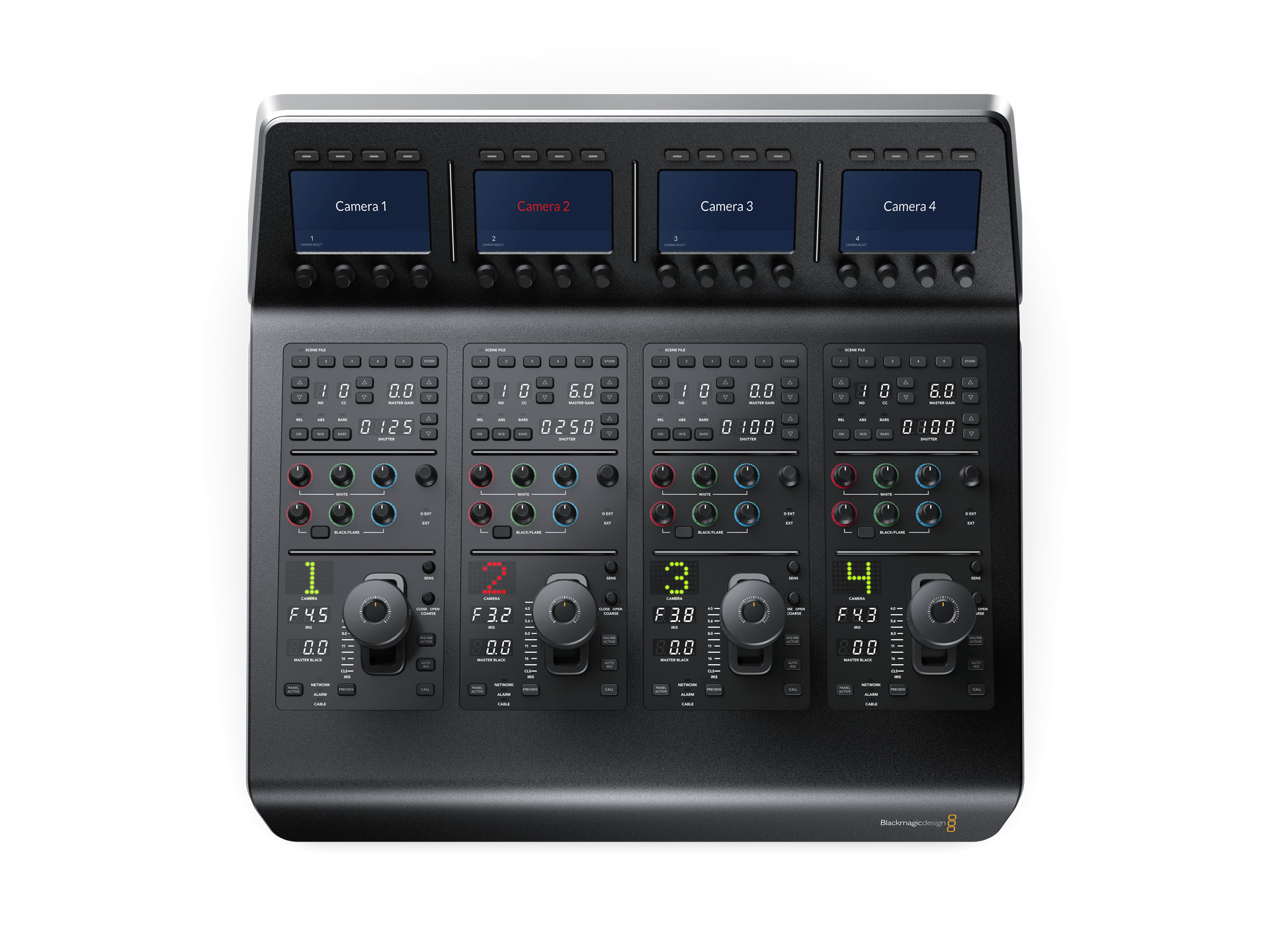Blackmagic Design debuted new gear designed for 4K broadcasting, announcing a new Ursa Broadcast UHD camera, the first 4 M/E Atem switcher, a revamped 1 M/E control panel, and a pair of fiber converters allowing cameras to be powered and controlled over up to 2 km of SMPTE fiber cable.
In a web conference spotlighting the new products, Blackmagic CEO Grant Petty positioned the announcement as an overture to low-budget broadcasters looking to move into UHD, particularly what he called a newly emerging group of web broadcasters. “Web broadcasters need the same high-end workflow that traditional broadcasters have been used to, so both groups need help,” he said, later noting a desire to eliminate “class differences” among different types of broadcasters.
Blackmagic Ursa Broadcast Is a Field Camera … and a Studio Camera
The backbone of the announcement was the Blackmagic Ursa Broadcast camera ($3,495), which Petty stressed was designed for both studio and field production configurations. The Ursa Broadcast has a 4K image sensor and an “extended video” recording mode designed to stretch dynamic range effectively for quick-turnaround applications, and the included B4 lens mount means it works with legacy broadcast glass. (Interchangeable EF-, PL- and F-mounts are available as options.) The combination of a smaller sensor and the B4 lens mount means the Ursa will share the practical, deep-focus image characteristics of broadcast video cameras — no beautiful bokeh here.
The Ursa Broadcast records to SD, UHS-II and CFast media using 10-bit DNxHD 145, DNxHD 220x or ProRes encoding; 12-bit CinemaDNG raw is also an option, and 3D LUT support is built in. The camera features the connectors broadcasters expect — 12G-SDI for video out and return program feed, supporting up to 2160p60, HD-SDI monitoring out, LANC inputs, balanced XLR audio with phantom power and timecode/reference in. A standard 12-pin Hirose connector supplies lens control and power, and a four-pin XLR 12V DC power output and HD-SDI monitor output can be used with viewfinders and monitors.
Fiber Converters Extend Your Range
Ramping up its commitment to broadcast, Blackmagic bolstered the new camera with fiber converters that allow it to be powered (along with lenses and accessories) and controlled over up to 2 km of SMPTE fiber cable.
The Blackmagic Camera Fiber Converter ($2,995) attaches to the back of a camera, adding a rear set of studio controls — including two talkback connectors allowing the use of pro five-pin XLR headsets, three return video feeds, and two audio inputs — along with fiber support. “It’ll work with any camera that supports a battery plate,” Petty noted.
On the other end of the fiber line is the Blackmagic Studio Fiber Converter ($2,995). The fiber plugs into the front of the converter, right next to a five-inch LCD display for verification of the camera feed, and the back of the converter includes connections for power, intercom/tally, PTZ control, XLR audio out, 12G-SDI I/O, ref I/O, and USB-C.
Used together, the Fiber Converters convert the camera’s video signal losslessly to IP video that can be carried over the 10 Gb Ethernet fiber connection to the studio, where it’s converted back again to the video realm. It’s a proprietary process now, but may become an open standard in the future.
“It’s a future-proof IP-video-based design,” Petty said. “Right now it’s pretty much proprietary, end to end, but we’ll be able to open it up later [in a software update]”
Switching It Up — and with a Free Upgrade
Blackmagic has also been hard at work on switchers, and now it’s rolling out the Atem 4M/E Broadcast Studio 4K ($5.995), marking the first time an Atem switcher has supported 4 M/E. It’s a UHD 2160p60 switcher with 20 inputs and four chroma keyers per M/E for a total of 20. Not only does this new switcher replace the 12G Atem 2 M/E Broadcast Studio 4K in the Atem line-up, it’s a free software upgrade for owners of the previous model.
Also new is the Atem 1 M/E Advanced Panel ($2,995), which works with all Atem switchers and takes a more streamlined approach than the company’s previous 1 M/E control panel. It’s less than 1 RU in width and sports a useful LCD display, dynamic button displays and color button backlighting to help users keep a firm grip on their live program. For users who like to get handsy with their gear, it’s an attractive alternative to software control.
Everything announced is shipping now, according to Petty, with one exception: Blackmagic also showed the brand-new Atem Camera Control Panel ($2,995). This design is meant to allow one user to control four cameras — iris, shutter speed, white balance, gain, pedestal, RGB, etc. — from a single desktop device. It’s expected to ship in May or June, Petty said.
Blackmagic Design: www.blackmagicdesign.com




